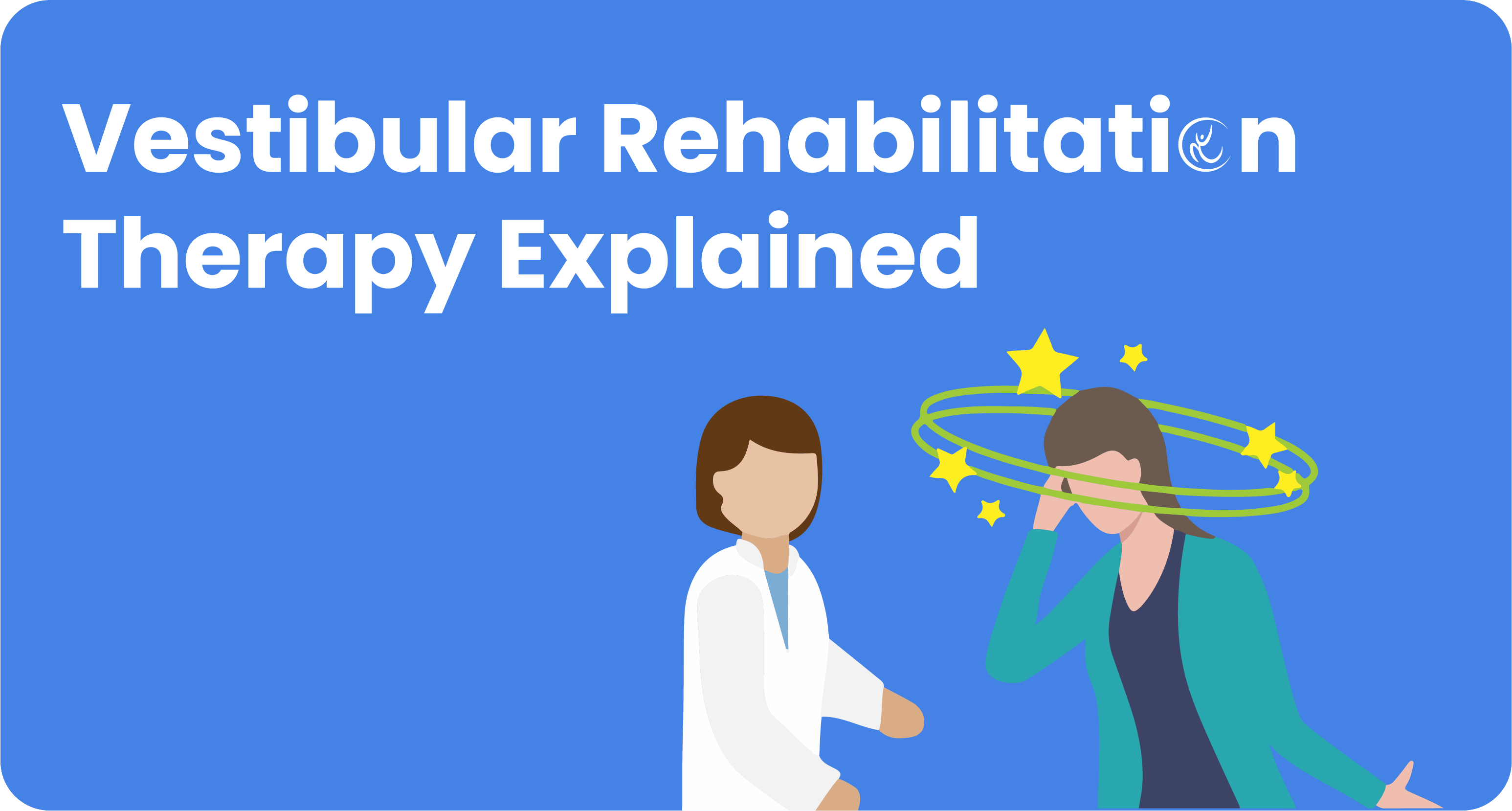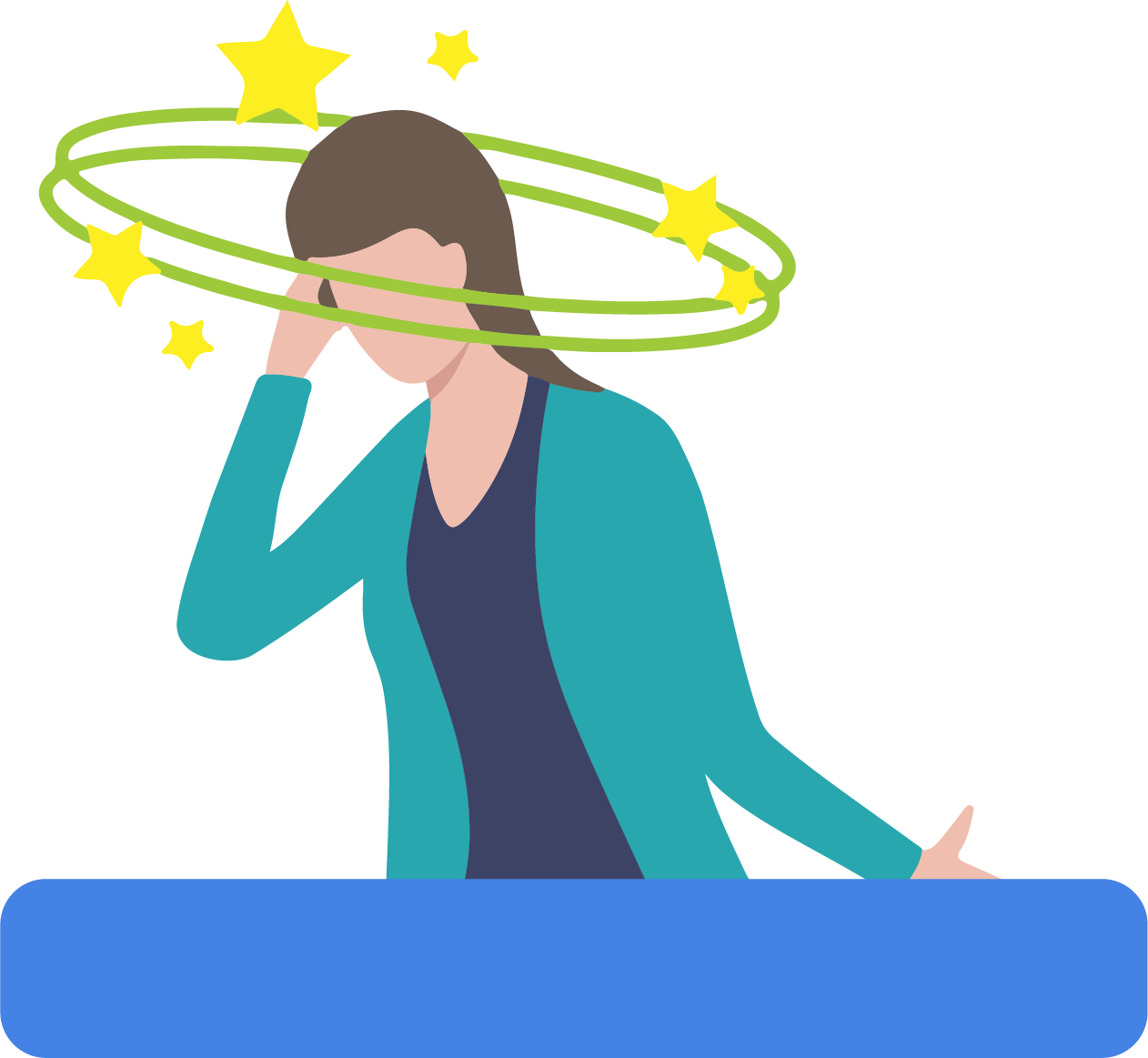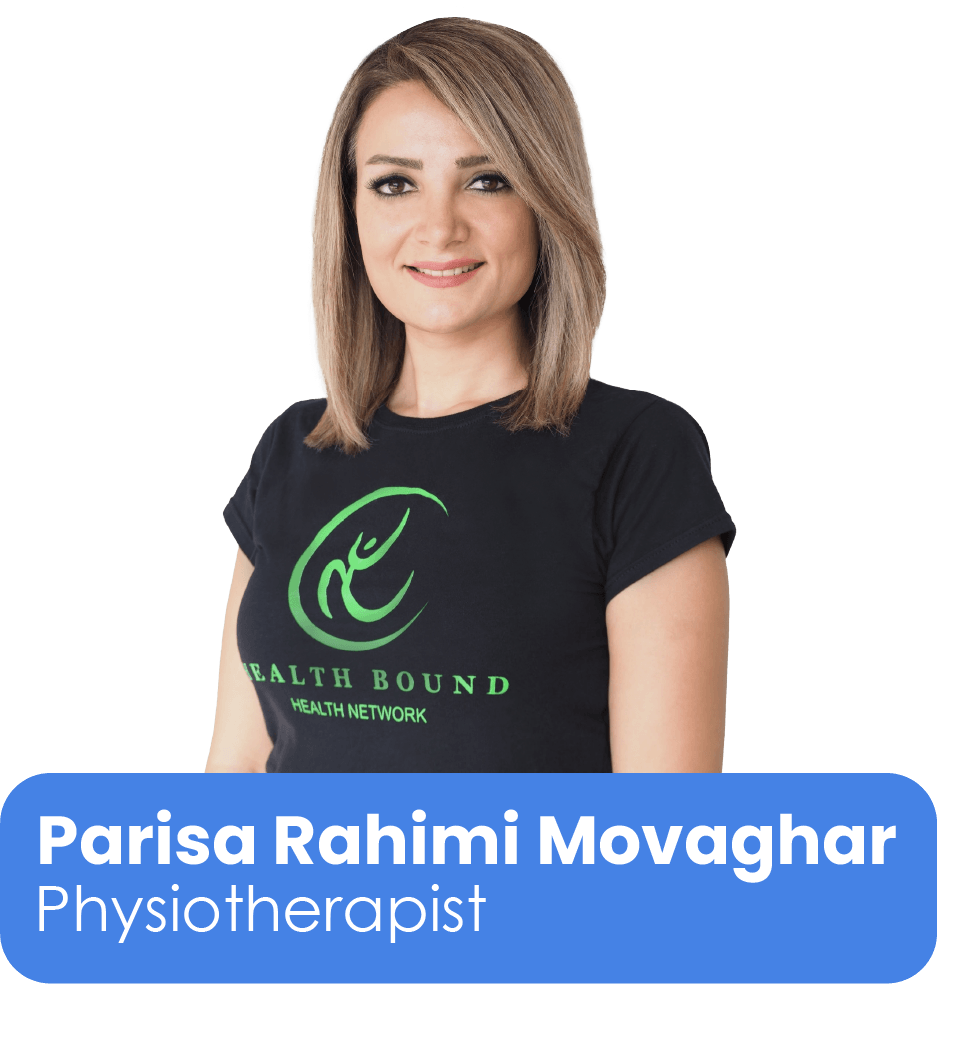Have you ever experienced dizziness, feeling of floating, balance disturbance, blurred vision, difficulty concentrating, disorientation, or any history of fall for unknown reasons, after ear infection, or even a trauma? If you said yes to any of them, it could be a result of vestibular disorders. In this blog, we will discuss the anatomy of a vestibular system, its most common disorders, prevalence, symptoms, causes, diagnosis, and treatment.
What is a vestibular system?
The vestibular system is made of two parts: the inner ear and brain, which process the sensory information associated with balance control and eye movements. If any disease or injury damages these parts, dizziness or balance disturbance can result. Vestibular disorders can also result from unknown reasons, which will occur suddenly with no clues. Genetics can be another reason to develop this disorder.

What are the most common vestibular disorders?
Benign paroxysmal positional vertigo (BPPV), Vestibular migraine, Ménière’s disease, Age-related dizziness & imbalance, and Vestibular damage due to head injury are the most common vestibular disorders among people. You might have heard about these conditions and never thought that those are all related to the inner ear and brain.
Prevalence of vestibular system disorders occurrence
According to the Vestibular Disorder’s Association (VeDA), almost 35% of adults who are in their 40s or older have experienced at least one of the vestibular disorders. Dizziness is the common symptom in approximately half of the older people dealing with BPPV, which is known as vertigo.
Henceforth, we want to be more focused on the most common type of vestibular disorders, which is benign paroxysmal positional vertigo (BPPV), and its treatment; vestibular rehabilitation, respectively. BPPV is described as non-life-threatening, periodic, in certain head positions and movements, and a false sense of rotational movement. It is important to know that vertigo does not give you constant dizziness, headache, neurological symptoms such as numbness, or any hearing problems. BPPV is associated with trauma, migraine, inner ear infection or disease, diabetes, osteoporosis, intubation (presumably due to prolonged time lying in bed), and reduced blood flow, which makes you have a feeling of spinning in specific directions and sometimes imbalance.
How to manage your care?
The kind of treatment that you would be prescribed depends on your symptoms, medical history and general health, a physical examination by a qualified doctor, and diagnostic test results. In addition to being treated for any underlying disease that may be contributing to the balance disorder, treatments can include:
-
Vestibular Rehabilitation Therapy (VRT): is a specific form of exercise-based therapy which is provided by a physiotherapist who is specialized in that to relieve the patient’s symptoms and improve their balance deficit.
-
Home-Based Exercise: It is an important part of improving balance and retraining, which is a customized exercise based on the patient’s needs.
-
Medication: It is prescribed based on the doctor’s diagnosis as well as the progression of disorders if it is in an acute or chronic phase.
-
Surgery: When none of the options work to control vertigo, the last option is surgery. The type of surgery depends on each patient’s diagnosis and physical condition.
If you are experiencing any of the noted symptoms we mentioned here and choosing vestibular treatment for that, you are at the right place! We are here in health bound health network to help you!
We offer vestibular rehabilitation at Health Bound Health Network!
We have physiotherapists who are specialists in vestibular rehabilitation. The first step they take is doing a proper assessment by taking the patient’s history and also performing special tests such as Dix-Hallpike or Roll Tests to make the best diagnosis out of them. The second step is providing patients with the appropriate treatment maneuvers such as the Epley maneuver or self-treatment options. However, before testing or treating for BPPV, our healthcare providers perform a careful neurological scan, evaluation of the neck, and other safety-related investigations to determine if certain elements of the procedure need to be modified or avoided.
Studies show that treatment maneuvers for BPPV are effective with a rate of 90% after 1-3 treatment sessions. Your practitioner may advise patients to avoid certain head positions for a few days following treatment. Even after their problem has been solved, people may
often feel some sensitivity to motion and unsteadiness, so they should follow up with their vestibular therapist so that they have a chance to assess this and provide home-based exercise techniques that typically treat this quickly.
In conclusion, BPPV is a common disorder and will be experienced more and more as our population ages, but there is nothing to be concerned about. With a healthcare provider who is professionally trained in the assessment and treatment of BPPV, most patients are satisfied that their problems can be easily solved, and their world can stop spinning.
About the Author
My name is Parisa Rahimi Movaghar. I am a physiotherapist, and I have been working at Health Bound Health Network for five years. I provide physiotherapy care for our patients dealing mostly with neuromuscular conditions as well as vestibular rehabilitation. As I have worked in this field for 13 years now. I love my job since I can help people reduce their pain or discomfort and get them back to their daily activities. Because I am very passionate about broadening my knowledge, I’m currently enrolled in the Doctor of Physiotherapy program at ATSU University of Arizona and expect to achieve my Doctorates in late 2022. My hobby is cooking if I’m not busy studying in my spare time, and I am always eager to try new recipes and cook delicious dishes!




